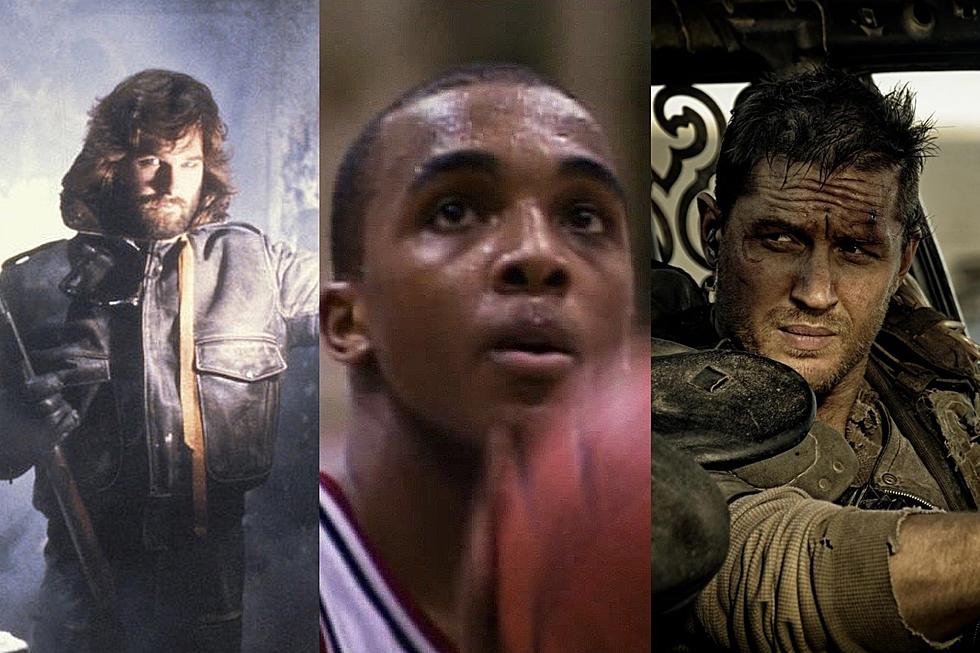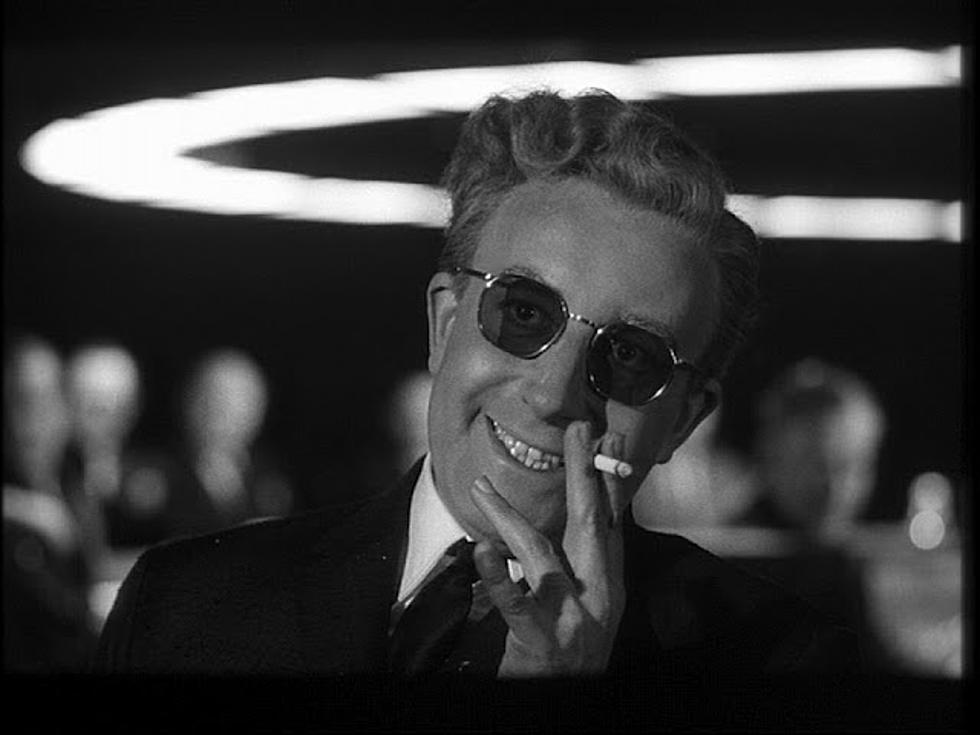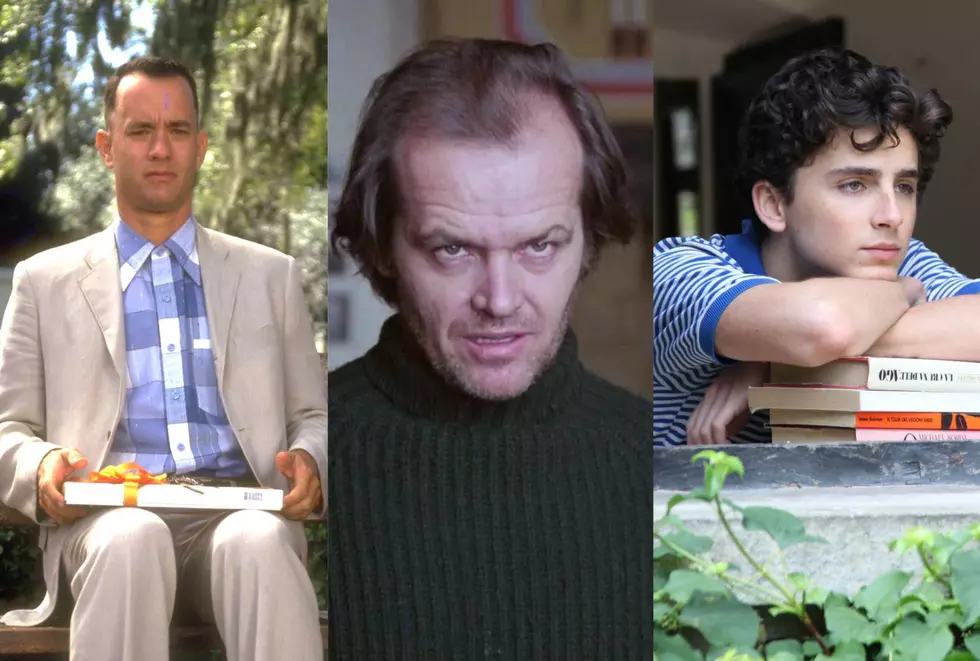
‘The Shining Forwards and Backwards’ Review
“I'm going to get absolutely wrecked and watch two prints of the 'The Shining' projected over one another, one of which in reverse, and assault my senses to terrifying imagery letting my usual methods of interpreting story get tossed to the seas of synchromysticism.”
That was the plan at Fantastic Fest 2012 and, should the tinfoil hat Warhol-esque experiment known as 'The Shining Forwards and Backwards' ever make itself available to you, I strongly endorse making your open (and perhaps altered) mind available.
I can barely remember a time before 'The Shining.' I'm old enough to recall being horrified by the film's teaser trailer -- the famous slow shot of endless blood (cranberry juice?) erupting from an elevator with enough force to move couches. You know Danny's reaction shot, face frozen in apoplectic terror? That was me. That single image sent me into such emotional torment that even the mere sight of the film's poster of VHS cover filled me with dread.
As the upcoming documentary 'Room 237' makes clear, I am not alone in ascribing some sort of importance to Stanley Kubrick's 1980 adaptation of Stephen King's novel. Did Kubrick embed all sorts of secret messages in the film? Is there a ghost in the machine? Or will peculiarities and synchronicities reveal themselves if we scrutinize any old work of art?
It's possible – but this ignores one important point. When you dim the lights, get heavy and really chomp into a “text,” it's a helluva lot more fun when it is something like 'The Shining.'
Working in concert with the presentation of 'Room 237,' the geniuses behind Fantastic Fest decided to screen 'The Shining Forwards and Backwards,' a homebrewed mind trip similar to 'Dark Side of the Rainbow.' Two projected images appear at the same time – the whole of 'The Shining' in traditional and reverse direction. Though they have the same illumination, there is audio only for “forward,” giving that image dominance, so that the “reverse” frequently works in wonderful counterpoint. Program notes from “the world's greatest palindromest' John Fell Ryan were offered for those in the audience “less chaos-oriented.”
Yes, some of the “syncs” are extraordinary. “Which room was it?” Shelly Duvall asks, as a bold close-up of a key marked Room 237 appears beneath it. And that's just one of a handful that work almost too perfectly.
There's no question that Stanley Kubrick framed his film with a symmetric structure. On a purely visual level, when you think about 'The Shining' you think about rectangular hallways and rooms and close-ups in center frame. Is “Redrum” a suggestion that we should look at this whole movie in a mirror? Well, probably not, but an amazing thing happens if you do, and more than just gags like the aforementioned key.
The opening of 'The Shining' shows the Torrence family happily making their way to their doom. It couldn't be clearer to the audience, however, that accepting the job at the Overlook Hotel is a very bad idea. During the interview Jack Nicholson is essentially told what will happen to him. He puts up a facade – hush now, I'm not spooked by the story of the man who killed his family – but what's going on in his mind? He's immediately envisioning how it would happen, and in 'The Shining Forward and Back' we see this. Underneath his protestations of normalcy, we see him running through the maze, trying to murder his son.
During the Fantastic Fest screening, what struck me the most was how the characters (so frequently shown in close-up) appeared to be “shining” with themselves. Much like how Scatman Crothers would communicate to young Danny with his mind, the shadow images felt like the inevitable fates of the characters talking back in time to themselves. Leave the hotel, you fool, this is what will happen!
Perhaps the most exciting thing for me during 'The Shining Forward and Backward' was that, for a little while, I fell asleep. Like I said, I was “well prepared” for this screening. With my logic guard down, that's when my head really started making freestyle connections between everything I heard. The music on the soundtrack spoke with very specific and coherent messages (alas, I can not recall them now) leading me to believe that I was somehow communicating on a nonverbal level. The point is that I, much like the characters in this specific exhibition of the film, FELT LIKE A SHINER too.
At one point a loud noise woke me from my revery, and I immediately looked down at the bottle of beer in my hand. This was in Austin, but that geographical specificity wasn't enough to excuse what the label said: SHINER.
If that isn't heavy cosmic coincidence, I don't know what is.
'The Shining Forward and Backward' plays at cool arts institutions now and again. Keep your eyes and ears open to it and you may just achieve a really heavy evening.
Jordan Hoffman was the movies editor at Hearst Digital’s UGO for four years and currently contributes to SlashFilm, MTV’s NextMovie and StarTrek.com. He’s made two marginally successful independent movies, is a member of the New York Film Critics Online and was named IFC’s Ultimate Film Fanatic of the NorthEast in 2004. Follow him on Twitter at @JHoffman6.
More From ScreenCrush









